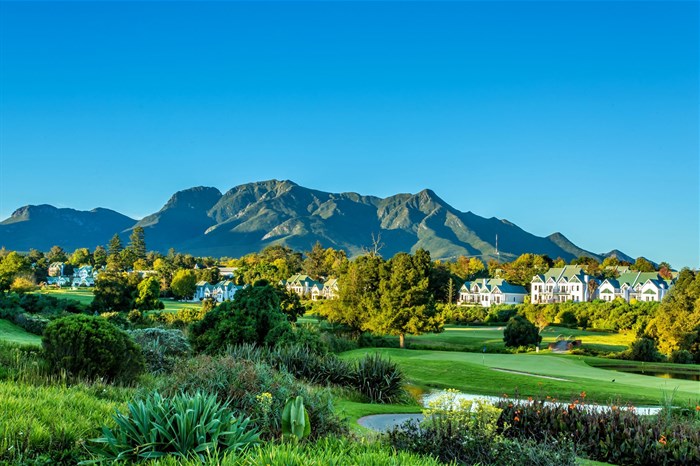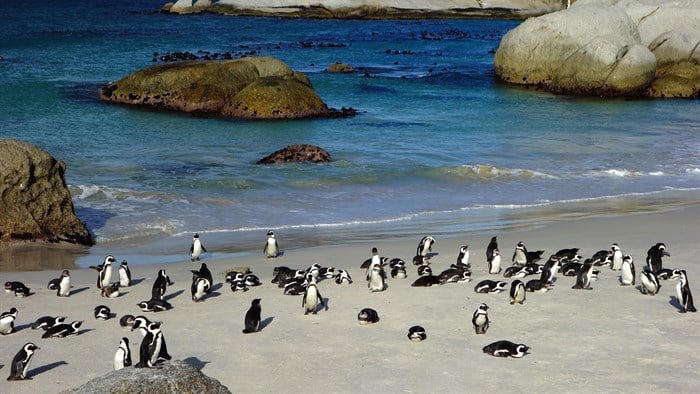
Top stories


Marketing & MediaCammy Msimango on finding her footing in South Africa’s fast-moving digital newsroom
Esther Tomorrow, MDNTV 20 hours




More news



Sustainable travel is built on the principle of treading lightly: minimising your impact on the environment, reducing your carbon footprint, making a positive contribution in terms of wildlife or environmental conservation and ensuring that local communities benefit from tourism (for example, buying local and supporting community guides, experiences and accommodation options).

If you count yourself amongst the pioneers who will return to travel first or perhaps you’re completely over being cooped up within your ‘four walls’, it’s time for some travel inspiration. Here are just five ways to enjoy a wonderfully ‘green’ trip along South Africa’s most spectacular Garden Route coastline:
The Garden Route promises an unforgettable, malaria-free, Big 5 wildlife experience of note. Even better, some of the region’s top game reserves offer conservation-focused safaris, a must for any serious eco-tourist.
Or take younger kids along to Gondwana Game Reserve, where they’ll enjoy an unforgettable Junior Ranger Experience, learning the basics of conservation and all about the Garden Route’s precious ecosystems. Think fresh air, fun, interactive activities and child-friendly game drives – and they’ll leave with a level 1 Junior Ranger Patch and a certificate in hand!
The Garden Route is blessed with some of the country’s most biodiverse and ecologically important areas. Lace-up your boots for a hike along Agulhas National Park’s windswept, rugged coastline, lowland fynbos trails and wetlands – where endangered flora and fauna can be found (including the region’s micro frog and the near-threatened African black oystercatcher).
Or visit the coastal village of Wilderness, and more specifically the Wilderness Lakes (Serpentine River, Island Lake, Langvlei and Rondevlei), which were named as Wetlands of International Importance on 28 June 1991. An early morning visit to the Rondevlei Bird Hide is the perfect way to escape the madding crowds!
The Garden Route also boasts some of South Africa’s most unspoiled beaches. Take a stroll down Noetzie beach just outside of Knysna, find the secret beach at Gericke's Point in Sedgefield or splash in the tidal pools at Herolds Bay.
Prefer mountain paths to beaches? Robberg Nature Reserve, 8km south of Plettenberg Bay, is home to the rare blue duiker, the Western Cape’s smallest antelope. See if you can spot it – if you can tear your eyes away from the southern right whales frolicking in the bay in front of you (between August and November).
Of course, an important part of sustainable travel is ensuring that your tourism buck (or rand) benefits and empowers the local community. Fancy a fabulous five-star stay on the Garden Route? Head to Fancourt in George.
For Hasso and Sabine Plattner, the family has always been at the heart of Fancourt and you can feel it. The estate supports initiatives identified by their staff, like the Ikamva Lethu Golf Development Programme in Thembalethu, which equips youngsters in the community with golf skills, through mentorship, coaching and support.
Whether you are exploring the estate’s nature trails on an eco-scooter, polishing your golf skills at The Academy at Fancourt, or relaxing at the spa, you’ll be indirectly supporting the local George community – and initiatives close to their hearts.

Overtourism has been a significant problem over the last few decades, with popular sites and sensitive ecosystems around the world being destroyed by the sheer number of their visitors.
Even before the arrival of Covid-19, the travel industry was reporting a rise in ‘under tourism’ – travellers opting for lesser-known destinations, off-season travel and off-the-beaten-track experiences.
Stuck in lockdown, people have delighted in stories of wildlife ‘reclaiming the streets’ – penguins waddling through Simonstown, a leopard strolling across a wine farm in Franschoek and antelope frolicking on the beach at Zimbali.

Travellers will want to keep the magic alive by exploring quieter corners of the globe, hoping for memorable wildlife encounters, authentic experiences and local flavour. The Garden Route has plenty.
Consider a unique meerkat encounter in the Karoo, where you’ll watch the sunrise just as a local mob of meerkats pop up their heads to start their day. Or head to the small village of De Rust and the incredible Meiringspoort Pass. The Meiringspoort Waterfall, with its thundering waters and beautiful pools, is a Unesco World Heritage Site – one (if you believe local legend) that once was home to a mysterious dark-haired mermaid.
Alternatively, potter around the local art studios and galleries of Wilderness before grabbing a coffee in Timberlake Village, an eclectic collection of shops, eateries and coffee shops – complete with a fairy garden for the kids.
There is a Chinese proverb that says: “The best time to plant a tree was 20 years ago. The second-best time is now.”
Consider planting a tree to offset the carbon emissions of your trip. Look out for tour operators who will plant a tree on your behalf – or plant your own. Fancourt has made it easy for guests to plant a tree on their estate, which means you can leave more than just your heart on the Garden Route.